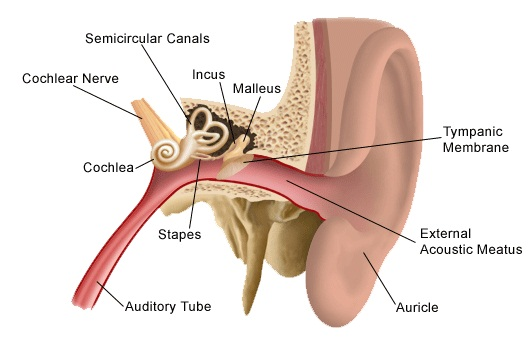Anatomy and physiology of the Ear
Hearing is one of the main senses and significant for distant warning and communication. It can be used to communicate pleasure, to alert and fear. It is a conscious admiration of vibration perceived as sound. In order to do this, the suitable signal should reach the higher parts of the brain. The role of the ear is to convert physical vibration into an encoded nervous impulse. It can be considered of as a biological microphone.
A concise knowledge of the anatomy of an organ is necessary to understand the physiology of that organ. The ear is morphologically subcategorized into External, Middle & Inner ears. The External ear consists of external auditory canal, Pinna, tympanic membrane. The Middle consists of Eustachian tube, tympanic cavity and its contents such as ossicle muscles, mucosal folds, ligaments, meatus and air cell system. And Inner ear consists of Cochlea, vestibule and semicircular canal.

Acoustic energy, in the form of sound waves, is channeled into the ear canal by pinna. Sound waves hit the tympanic membrane and cause it to vibrate, like a drum, varying it into mechanical energy. The malleus that is attached to the tympanic membrane begins the ossicles into motion. The stapes move in and out of the oval window of the cochlea producing a hydraulic energy, or fluid motion. The fluid movement causes membranes in the organ of Corti to shear against the hair cells. This generates an electrical signal that is sent up the auditory nerve to the brain. And the brain understands it as sound.